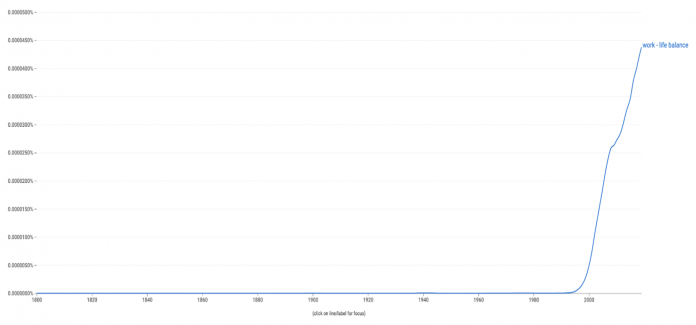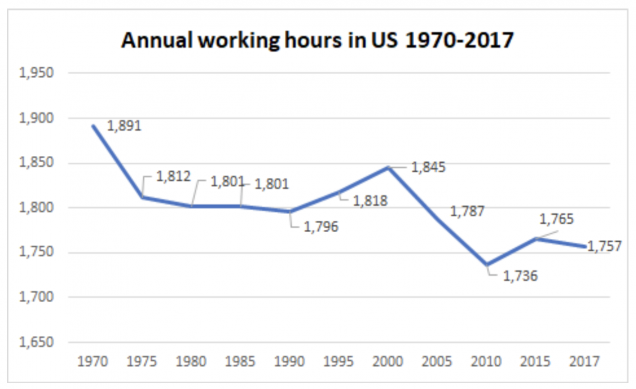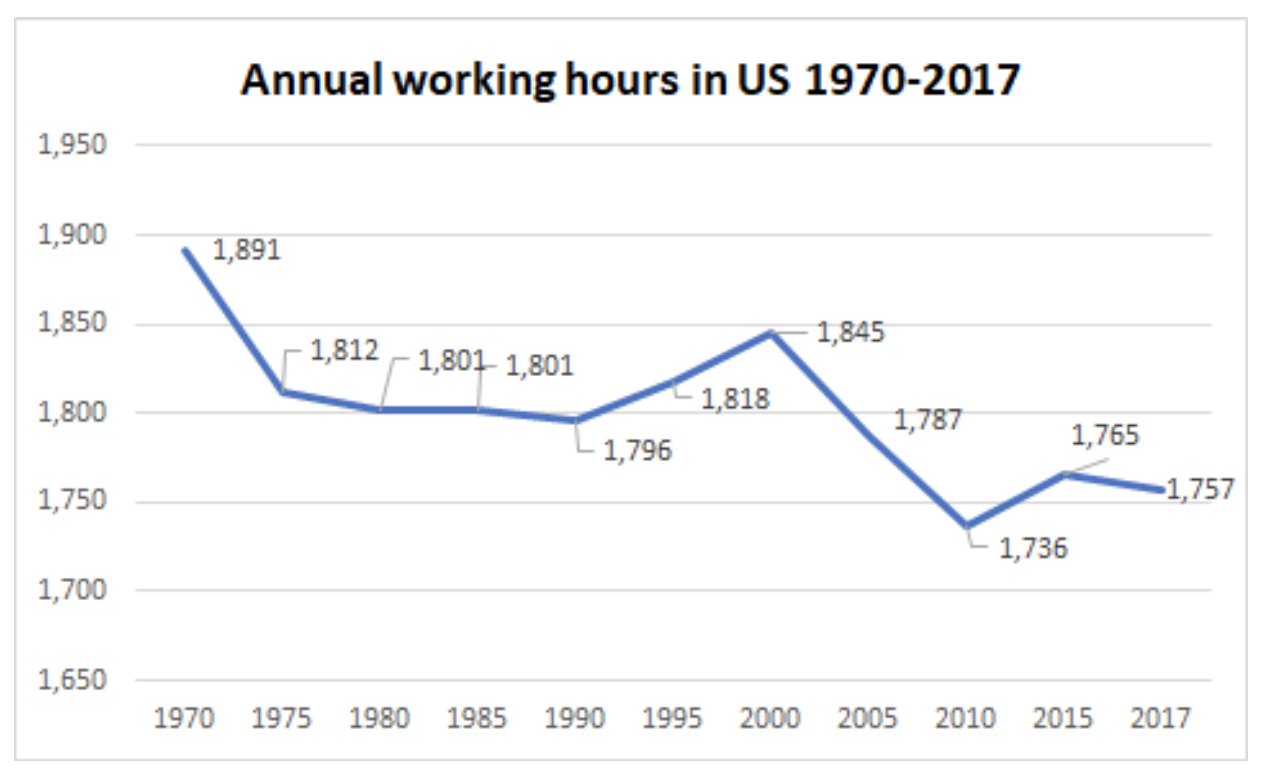Work-life balance is a myth. For as much talk as there is around this myth, you would think the concept had been around for centuries. Surely work-life balance was something that people throughout history struggled to obtain? The fact is the term work-life balance didn’t first appear in writing until the 1980s in the United Kingdom as part of the Women’s Liberation Movement*.
According to Google, here’s how often the term work-life balance appeared in print/online:

As you can see, the term was virtually non-existent before the 80’s. This drastic increase in the use of the term would lead you to believe that people must be working longer/more hours now than before 1980, but that assumption is wrong. Here’s what the average hours worked per year actually looks like:

Since 1970, the average number of hours worked per year in the US is down 134 hours per year. And this isn’t just a recent trend. It’s estimated that in 1840 the average number of hours worked annually was 3,346. Crazy! Today we’re working about ½ the number of hours each year our ancestors worked.
Call me crazy, but I’d be willing to bet our ancestors weren’t concerned about work-life balance. They didn’t have much choice. They simply did what was necessary to survive – no matter how long it took. They had no concept of work-life balance. They intuitively understood that they had one life – it didn’t matter if they were working, with family, or enjoying leisure time – it was all part of their life. I believe there’s so much wisdom to be gained from this perspective.
You see, what happens at home affects the way you work. And conversely, what happens at work affects you at home. It’s all one life, and trying to compartmentalize can quickly lead to frustration and anxiety. When work spills over into other areas, it causes us to feel frustrated. It feels like an intrusion into some sacred place. The intrusion, regardless of how minor, evokes feelings of imbalance. We begin to feel our life is out of balance and too heavily weighted towards work. But can we trust this feeling? Is this feeling an accurate representation of our lives?
Now let’s flip the scenario around. Imagine you have a lot going on in your personal life. Because of everything going on in your personal life you have to spend some time while at work taking care of those matters. How does it make you feel? Do you feel your life is out of balance? Do you feel that your personal life is overtaking your work life? Do you feel frustrated? Annoyed?
With careful examination, we often discover our feelings of frustration and imbalance don’t stem from our work-life balance being out of kilter, but instead from incorrectly setting our expectations.
The danger with work-life balance as a concept is that we view it from a short-term perspective. If we have to work more than 40 hours this week, we feel the scale is tilted too far to the work side. And then next week, if our personal lives infringe on our time at work, we feel the scale has tilted too far to the personal side. In our desire for this mythical work-life balance, we’re constantly frustrated with ourselves.
So if work-life balance isn’t the right approach, then what approach should we take? I propose we look to nature as our model. All of nature follows seasons. There is a natural rhythm to nature’s seasons.
Think about the farmer. A wise farmer follows nature’s natural rhythms. She cultivates the soil before planting season arrives. She plants before harvesting time arrives. Only a foolish farmer would try to go against these natural rhythms. And only a foolish farmer would be frustrated by the fact she had to work extra hours to get all of the seeds in the ground before the end of planting season.
We should learn from the farmer. We shouldn’t allow busy seasons in one area or another to frustrate us. Learning to examine and realign our expectations is vital work. You see, the majority of our frustrations and anxiety in life stems from misaligned expectations. When we expect a consistent 40 hour work week, but work currently demands 45 hours, we can’t help but feel frustrated. Our expectations lead to our feelings of frustration.
If instead, we take the approach of the farmer, our expectations will be aligned around seasons. Farmers understand that planting season will vary from year to year based on the weather. A farmer’s expectations are fluid – maybe ours should be as well?
When we decompartmentalize our lives, dropping the work-life balance myth, what we’re left with is the reality that it’s all one life. And if we want to get the most from this one precious life we have, we must learn to make the most of our lives.
Sources Cited:
https://www.kumanu.com/defining-work-life-balance-its-history-and-future/
https://clockify.me/working-hours


